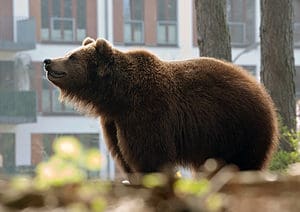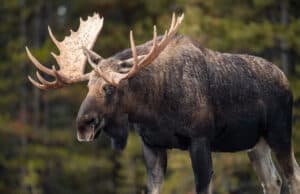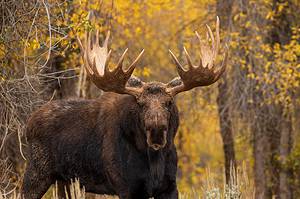Continue reading for our analysis...
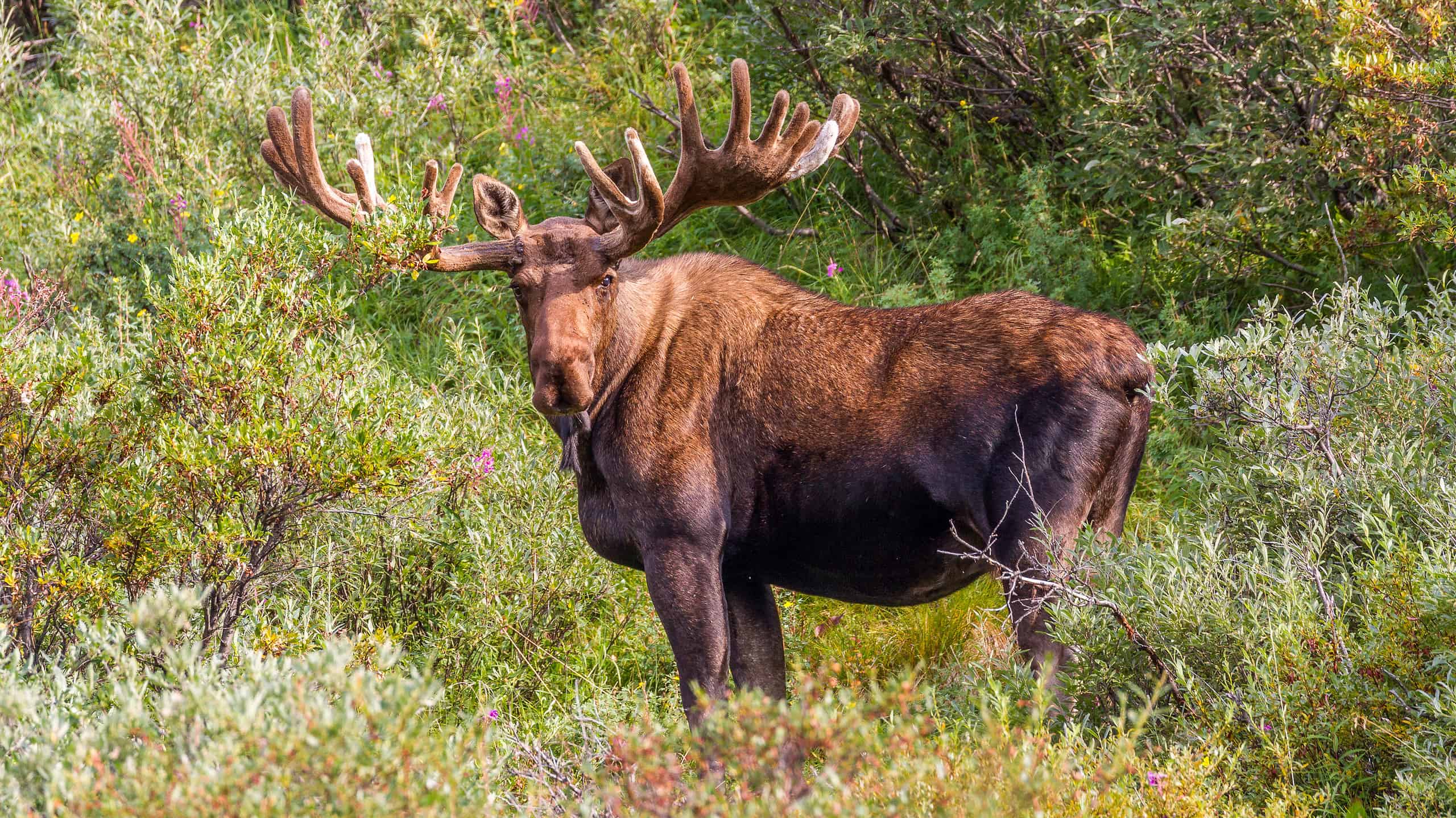
The tables seem to be turned on a bear in this extraordinary clip. Grizzly bears prey on moose, yet here, we see a large moose chasing a grizzly. The poor bear is so panicked that it runs straight into a window without realizing its error. We hear a loud smash, but the bear seems to be uninjured and hopefully gets away from its pursuer. Watch the full extraordinary footage shot in a stunning location.
Do Moose Eat Bears?
The moose (Alces alces) is the largest mammal species in North America and a resident of many of our national parks. They like to live in forests and at forest edges where there are lakes and ponds. This is similar to the habitat favored by grizzly bears.
These guys can grow up to six feet tall and weigh up to 1,800 pounds. They can run at 35 miles an hour. However, they are not predators.
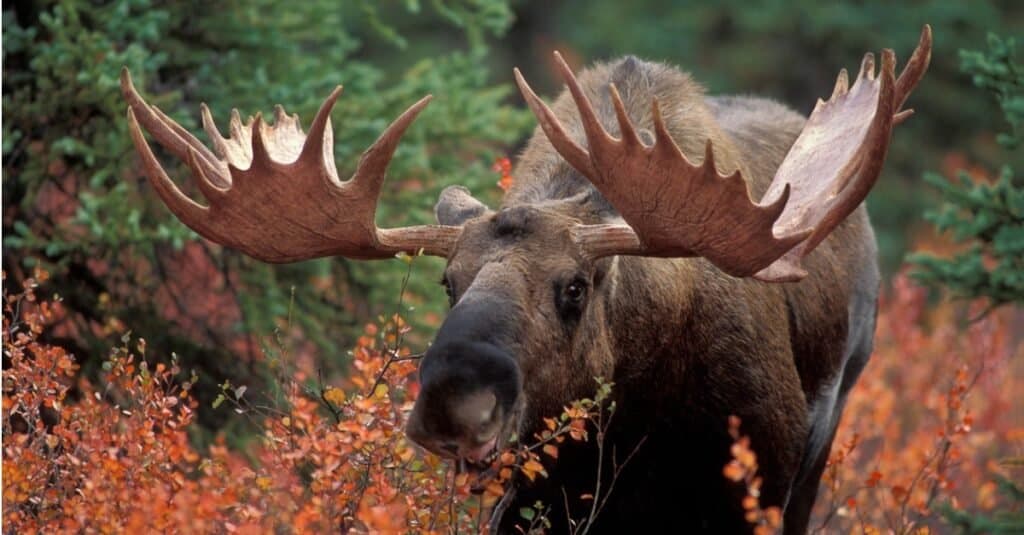
Moose (Alces alces) feed on woody and aquatic plants.
©iStock.com/RONSAN4D
Moose are herbivores, which means that they have a diet made up of purely plant material. They eat bark, roots, and shoots from woody plants. They particularly like willows and aspens. In warmer weather, they also feed on aquatic plants, including water lilies and pondweed. In the winter, they can be seen browsing on conifers and can digest the needle-like leaves. These guys are large animals and need around 40 pounds of food a day – so they spend most of their time eating. This moose is not chasing the bear because it wants to eat it!
Why Do Moose Chase Bears?
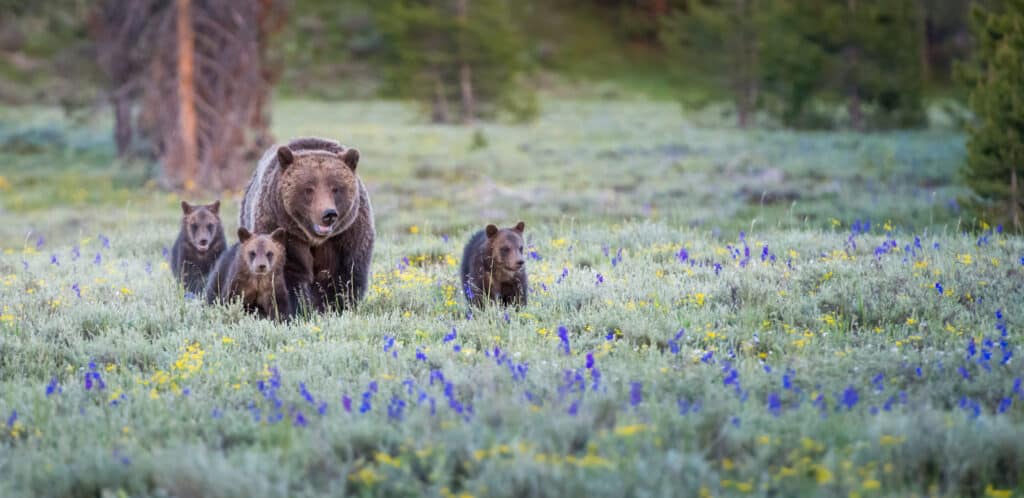
A mother grizzly bear will fiercely protect her young ones.
©iStock.com/Jillian Cooper
Grizzly bears are omnivores and, therefore, eat both plant and animal material. While the majority of their diet is made up of plants such as berries, they also need animal protein occasionally to keep them going. Bears will eat smaller mammals, but if they get the chance, they will target something larger. This means that you may see a bear chasing moose calves. If they can separate the calf from the mother, they stand a good chance of catching it.
As you can see in this clip, adult moose have nothing to fear from grizzly bears. It is the moose that has the upper hand and is chasing the bear away. There may be a calf nearby, or the moose may simply be irritated by the bear’s presence. It is also possible that this is an immature grizzly who has not yet learned that adult moose is not a sensible target!
Moose Versus Grizzly Bear: A Comparison of Size
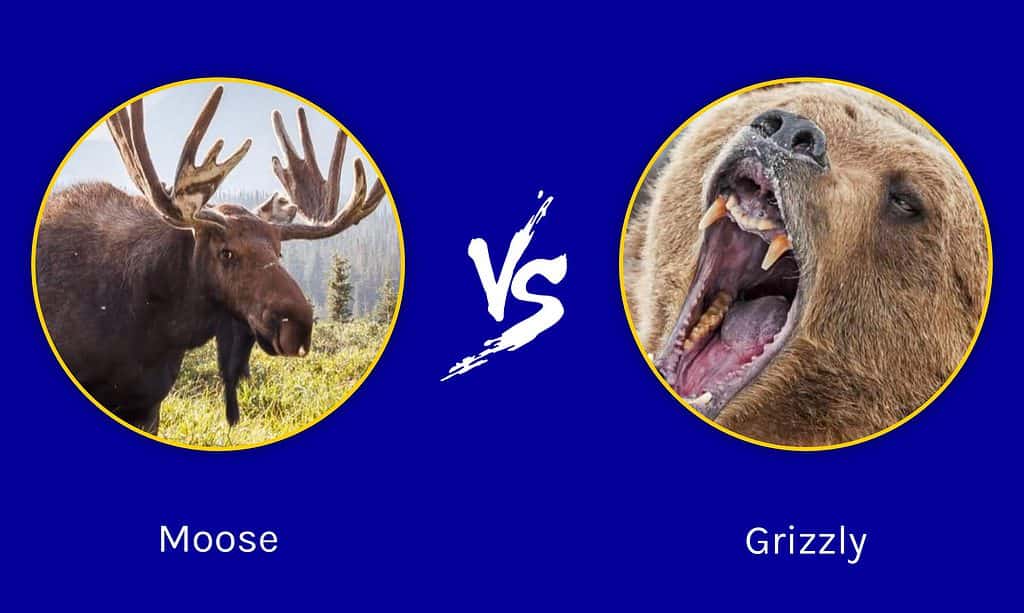
When comparing grizzly bears and moose, size is perhaps the most striking difference between these two powerful animals.
Grizzly bears can reach heights of up to 8 feet at the shoulder, weigh up to 800 pounds, and be as long as 8.2 feet. Surprisingly, they are born quite small – cubs are usually only about a foot in length and weigh less than a pound.
Moose, on the other hand, can reach heights of up to 6.5 feet at the shoulder, weigh up to 1,800 pounds, and be as long as 10 feet. Their calves are born much bigger than grizzly bear cubs, usually measuring between 20 and 25 inches and weighing up to 35 pounds.
When it comes to sheer size, moose dwarf grizzly bears. Not only are they much heavier and longer, but they can also reach heights that are more than a foot taller. Despite this, grizzly bears are much more powerful and agile. So, while moose have an edge when it comes to size, grizzly bears have an edge when it comes to strength and speed.
In any case, it is clear that both of these animals are impressive creatures. From their size to their strength, they are truly awe-inspiring animals that are an important part of their respective ecosystems.
Thank you for reading! Have some feedback for us? Contact the AZ Animals editorial team.




